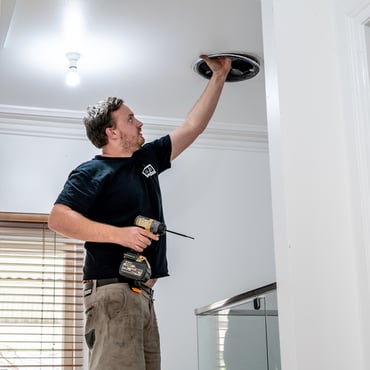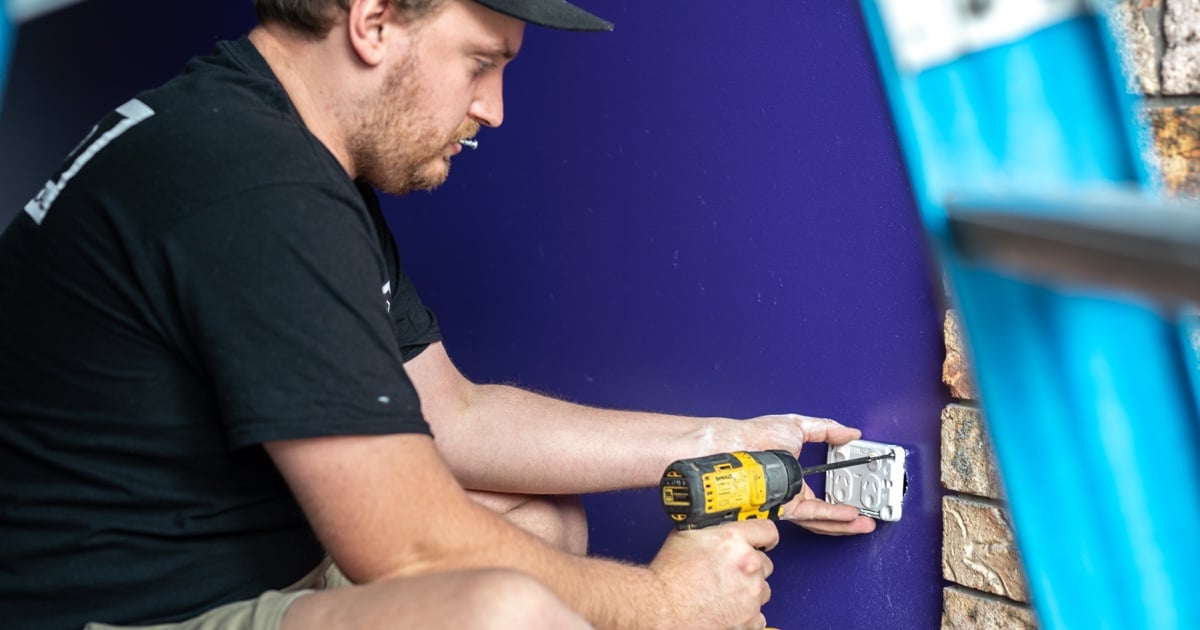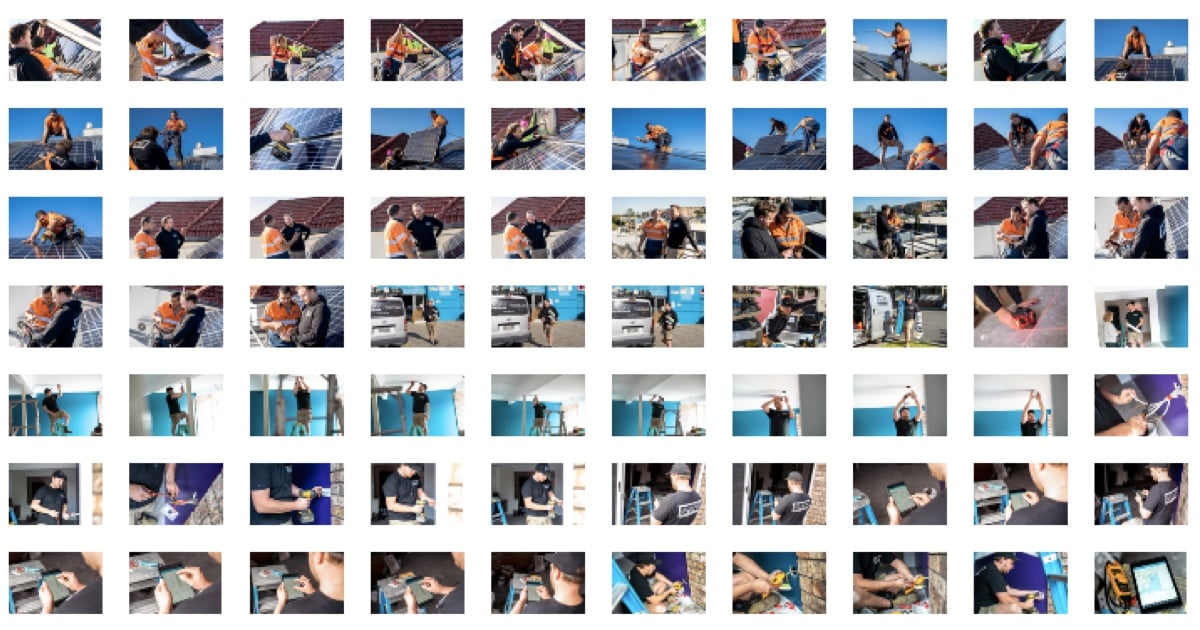by Team Tradify, January 9, 2025

Short on time? Jump ahead:
- Take your time
- Make sure your lens is clean
- Lighting is key
- Tidy up
- Get on the level
- Use people
- Choose your moment
- Take lots of shots
- Quality control
- Get organised
- Shoot like a pro
 "In a visual world, sharing images is crucial. They give people a chance to see behind the scenes and connect with you and your business." (Scott Harrison, Daily Salt Photography)
"In a visual world, sharing images is crucial. They give people a chance to see behind the scenes and connect with you and your business." (Scott Harrison, Daily Salt Photography)
1. Take your time
Take a minute before getting your camera out to look at the photo subject. Make sure it will give a good impression of quality while setting you apart from the competition. If images are sloppy, cluttered, or out of focus, people may assume your plumbing or electrical work will be too.
In fact, Scott says it’s better not to share any photos than to share a bad one.
“Dodgy photos will be a reflection on your work quality."
So, how do you morph from tradesperson to photographer? There are just a few simple principles you need to get right.
2. Make sure your lenses are clean
Your sites will be dusty, dirty, muddy, or maybe all three. Give the lenses and sensors on your camera a good polish with a clean cloth, so that your images come out nice and crisp.

3. Lighting is key
Photos are all about light! Make sure light is shining on what you’re photographing. If what you’re shooting is ‘backlit’, you’ll end up with a muddy silhouette. Face away from the window, sun, or lamp when you’re taking the shot. Check that you’re not casting a shadow in the wrong place before taking your shot.

Thinking about shooting something in a roof or under a house, but don’t have a strong light to shine on it? You might be best just to flag it – a dimly-lit space isn’t going to show up well on camera.
4. Tidy up
Before you get snapping, check that everything looks clean and tidy – a thumbprint on a clean new light switch or old bits of timber cluttering up the shot will detract from your professional look.
“Stage it a little bit. If there’s a random jumper or drink bottle in the background, take it out. If it’s a wider shot of a builder or a room, give everything a good clean,” says Scott.
5. Get on the level
Try not to shoot things from up high or down low. Instead, climb up (or down) so you’re on the same level as what you want a picture of. That means getting up a ladder to take a shot of your new downlighting or crouching down to snap that beautiful new bathtub.
6. Use people
People are interested in other people, so if you or your guys look presentable, talk them into getting in the shot too. You might like to take a snap of them finishing off the final screw or standing proudly next to the finished deck.
“It gives the images more character – there are only so many power points and fuse boards you can look at,” laughs Scott.

7. Choose your moment
Scott says timing your shots can make a massive difference.
“If you’re shooting outside, morning or afternoon is the best – the midday sun will give too many shadows. If you’re shooting an inside job, aim to take photos around midday. This will give you more light coming in from outside.”
8. Take lots of shots
One important difference between professional photographers and amateurs? Pros take lots and lots of shots. Scott recommends taking a minimum of 10 images every time.
Move-in for super-close detail, take a few from halfway, then step right back and take some from there. Move around a bit to get the shot from different angles too. This gives you a better overview of the job (which your potential customers will want to see) and it’ll give you a better chance that one of the images will be bang on.

Scott also recommends taking different shots for different uses.
“If you want to post the shots on Instagram, upright or square photos work best, whereas landscape is better for a website,” he explains.
9. Do a bit of quality control
Once you’ve got your shots, Scott says to zoom in on them to check that the right things are in focus. Try to find a hard edge to zoom in on – if it’s nice and crisp, you’re onto a winner. If it’s a bit blurry, snap a few more shots.
10. Get organised
Taking all those great images is kind of pointless if you don’t end up using them, so getting them organised is key. Scott suggests air-dropping or emailing them to yourself right away, and then storing them in smartly labelled folders, so you can easily find them again.
11. Shoot like a pro!
Well-shot images of quality work can help you to attract new business. Take Scott's professional advice on board and take time to get your photos right. You'll thank yourself in the long run.
Ready to give Tradify a go?
Start your 14-day Free Trial. No credit card required. No pressure. Or take a look at Tradify in action during one of our weekly 30-min live walkthroughs.







